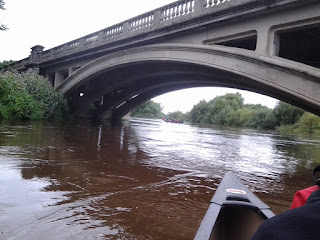Following a break for yesterday's coverage of BSBI at the launch of the State of Nature report, we now return to George Garnett's Diary of a Young Darwin Scholar. This is an FSC scheme which is supported by BSBI and aims to help young naturalists - the next generation of 'Darwins'.
We left George on his second evening at FSC Preston Montford, having failed to see a badger and with little faith in the Longworth traps he and fellow scholars set before they went to bed. Over to George for Day 3:
Monday 22nd August 2016
 |
| George happy to be proved wrong! Image: Sorrel Lyall |
Monday 22nd August 2016
"The next morning we went to check our traps. I’ll admit, I was wrong to be pessimistic! We found loads of small mammals: 5 bank voles and a wood mouse. In my trap was a bank vole as can be seen in the plastic bag in the picture.
I was pleased to have caught something so I was happy to be proved wrong!
I was pleased to have caught something so I was happy to be proved wrong!
The main activity of the day however, was canoeing down a section of the River Severn. We were in Canadian canoes which were rafted together in pairs. In the morning, we just paddled downstream pointing out anything of interest.
We saw Herons, Mute Swans, Sanderlings, Banded and Beautiful Demoiselles, a Kingfisher, numerous Willow species (Crack, White, Grey) and lots and lots of Himalayan Balsam!
The most exciting find had to have come from our boat though, an otter.
Running with the theme of animals I have missed, all I managed to see was the ripple it left behind after diving back under the surface of the water. It was some consolation that half of our boat and the other two boats had also missed it.
 |
| George's catch: a bank vole, just before it was released again Image: G. Garnett |
The most exciting find had to have come from our boat though, an otter.
Running with the theme of animals I have missed, all I managed to see was the ripple it left behind after diving back under the surface of the water. It was some consolation that half of our boat and the other two boats had also missed it.
After lunch, we were given a net and tray to carry out freshwater sampling and determine water quality using the invertebrate species composition.
Unfortunately we did not find a single invertebrate, instead catching small fry fish. In hindsight, our lack of success may have been because we were not sampling in gravelly areas where many of the freshwater invertebrates live.
Unfortunately we did not find a single invertebrate, instead catching small fry fish. In hindsight, our lack of success may have been because we were not sampling in gravelly areas where many of the freshwater invertebrates live.
 |
| The view from the canoe Image: Fiona Boyle |
In this we were more successful and did end up with data that could potentially be useful, with a little refinement to the method.
I won’t go into detail of the method here however, as I want to keep this blog post relatively brief!
This was a really lovely day out and again, it was nice to appreciate Shropshire’s natural beauty and continue learning more and more from my fellow scholars.
 |
| Birds at Venus Pool NR Image: G. Garnett |
It was eye opening and although not a path I currently intend to take, it’s always good to keep an open mind.
After dinner we visited the Venus Pool Nature Reserve, owned and managed by the Shropshire Ornithological Society.
My knowledge on birds is embarrassingly poor so I was grateful to the birders in the group who could name the species we encountered for me. Among these were Green Sandpipers, Lapwings, Little Egrets and Greenshanks.
We were even fortunate enough to hear, and then see, Barn Owls in the arable fields on the reserve".
Good to hear that, after so many near-misses, George had a few decent sightings at last but that's the trouble with animals - they fly/run/wriggle away before you can get a good look. Plants on the other hand sit still very obligingly until you've got the ID book out and applied your handlens!
In tomorrow's final instalment, George gets to do some botany at last, and with an expert tutor - tune in tomorrow for what George describes as his "favourite day of the course!"
 |
| Evening at Venus Pool NR Image: G. Garnett |
We were even fortunate enough to hear, and then see, Barn Owls in the arable fields on the reserve".
Good to hear that, after so many near-misses, George had a few decent sightings at last but that's the trouble with animals - they fly/run/wriggle away before you can get a good look. Plants on the other hand sit still very obligingly until you've got the ID book out and applied your handlens!
In tomorrow's final instalment, George gets to do some botany at last, and with an expert tutor - tune in tomorrow for what George describes as his "favourite day of the course!"
No comments:
Post a Comment
Please leave a comment!